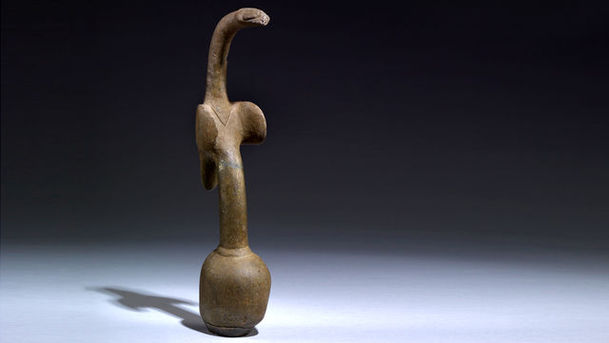A History of the World in 100 Objects - After the Ice Age: Food and Sex (9000 - 3500 BC) - Bird-shaped Pestle

Neil MacGregor continues his retelling of human history using 100 selected objects from the British Museum. This week he explores the profound changes that humans experienced at the end of the Ice Age. By this period, humanity is reconsidering its place in the world and turning its attention to food, power, worship, and human relationships. But then, as now, one of the most important parts of human existence was finding enough food to survive. Taking a pestle from Papua New Guinea as an example, Neil asks why our ancestors decided to grow and cook new foods. The answer provides us with a telling insight into the way early humans settled on the land. Becoming farmers and eating food that was harder for other animals to digest made us a formidable force in the food chain. The impact on our environment of this shift to cookery and cultivation is still being felt. Neil is joined by Indian food writer Madhur Jaffrey, campaigner Sir Bob Geldof and archaeologist Professor Martin Jones.